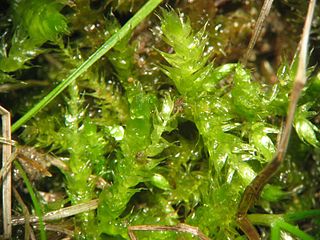
Goosegrass is a common name for several grasses, sedges, and annual herbs. The origin of the name is due either to a plant's use as food for geese or plant parts that look like the foot of a goose.
The sudis was a stake carried by Roman legionaries for employment as a field fortification, sometimes also called vallus. It is frequently, but incorrectly, called a pilum murale. Typically, two such stakes were carried by each soldier.

Chenopodiastrum murale, is a species of plant in the family Amaranthaceae known by the common names nettle-leaved goosefoot, Australian-spinach, salt-green, and sowbane. This plant is native to Europe and parts of Asia and northern Africa, but it is widespread worldwide, particularly in tropical and subtropical areas due to the ease of it being introduced. It is a common weed of fields and roadsides.
Morava architectural school, also known as the Morava style, or simply as the Morava school, is an ecclesiastical architectural style that flourished in the Serbian Late Middle Ages, during the reign of the Lazarević and Branković dynasties.

Montgomery is an underground station on the Brussels Metro, the first station on the eastern branch of line 1, in the Brussels-Capital Region, Belgium. The station also serves a number of tram lines and buses: Brussels tram routes 7 and 25 pass through, and 39 and 44 terminate there, while tram route 81 and a number of buses stop at surface level.
Feather moss, or Hypnales, is an order of leafy mosses.

Galium murale is a species of flowering plant in the coffee family known by the common names small goosegrass, yellow wall bedstraw and tiny bedstraw. It is native to the Mediterranean Basin of southern Europe and northern Africa, and the Middle East from Turkey and the Caucasus east to Iran and south to Saudi Arabia and Somalia. It is also considered native to the Canary Islands, Madeira and the Azores. It is naturalised in Australia, New Zealand, Argentina, Chile and California.

Coleophora squalorella is a moth of the family Coleophoridae. It is found from Fennoscandia to Austria, Croatia, Romania and Ukraine and from the Netherlands to the Baltic states. It is also known from the lower Volga and Ural regions of Russia and China. It occurs in steppe and semi-desert biotopes.

Coleophora clypeiferella is a moth of the family Coleophoridae. It is found from Fennoscandia to France, Austria, Hungary and Bulgaria and from Great Britain to Latvia, Lithuania and Ukraine. It is also known from the Caucasus and Ural regions of Russia and China. It occurs in steppe and cultivated areas.

The Arbore are a Cushitic ethnic group living in southern Ethiopia, near Lake Chew Bahir. The Arbore people are pastoralists. With a total population of 6,850, the Abore population is divided into four villages, named: Gandareb, Kulaama, Murale, and Eegude.

Scrobipalpa atriplicella, the goosefoot groundling moth, is a moth of the family Gelechiidae. It is found from most of Europe throughout Asia to Kamchatka and Japan. It is an introduced species in North America.
Microbacterium murale is a Gram-positive bacterium from the genus Microbacterium which has been isolated from an indoor wall in Giessen in Germany.
Ornithinimicrobium murale is a Gram-positive and non-spore-forming bacterium species from the genus Ornithinimicrobium which has been isolated from an indoor wall from Giessen in Germany.

Jorit Ciro Cerullo, professionally known as Jorit, is an Italian street artist. He is known for painting murals depicting faces of people with red streaks on their cheeks.

Brachytheciaceae is a family of mosses from the order Hypnales. The family includes over 40 genera and 250 species.

Ilaria Cucchi is an Italian human rights activist and politician.

Rhynchostegium is a genus of pleurocarpous mosses belonging to the family Brachytheciaceae. The genus has a cosmopolitan distribution across different climatological regions except the polar regions, mostly in tropic to north temperate regions. The genus contains both aquatic and terrestrial species. The genus was named for their rostrate opercula. The type species of this genus is Rhynchostegium confertum (Dicks.) Schimp.

Menat Abbey is an abbey located in the village of Menat, Puy-de-Dôme, in the heart of the Sioule valley. It is one of the oldest monastic foundations in Auvergne.
Rhynchotegium serrulatum is a species of moss in the Brachytheciaceae family. It is mainly distributed throughout the Americas.













